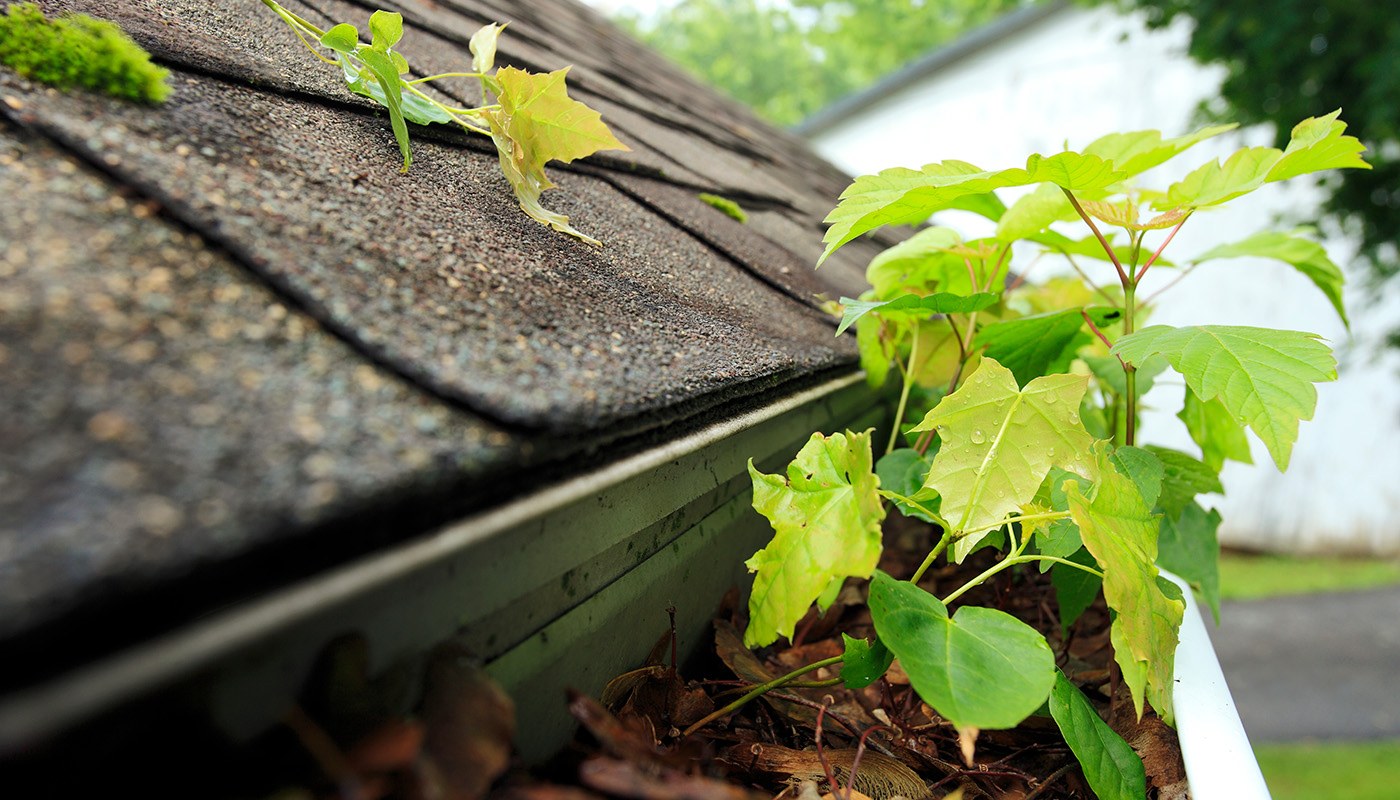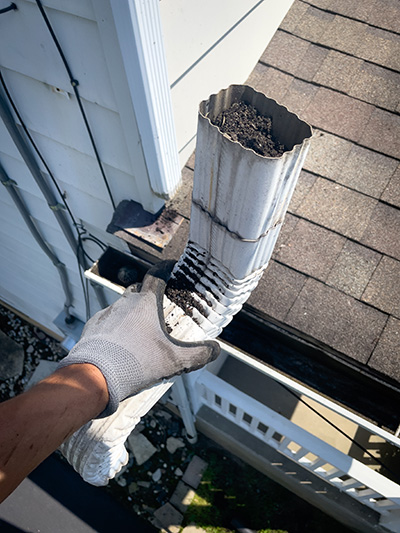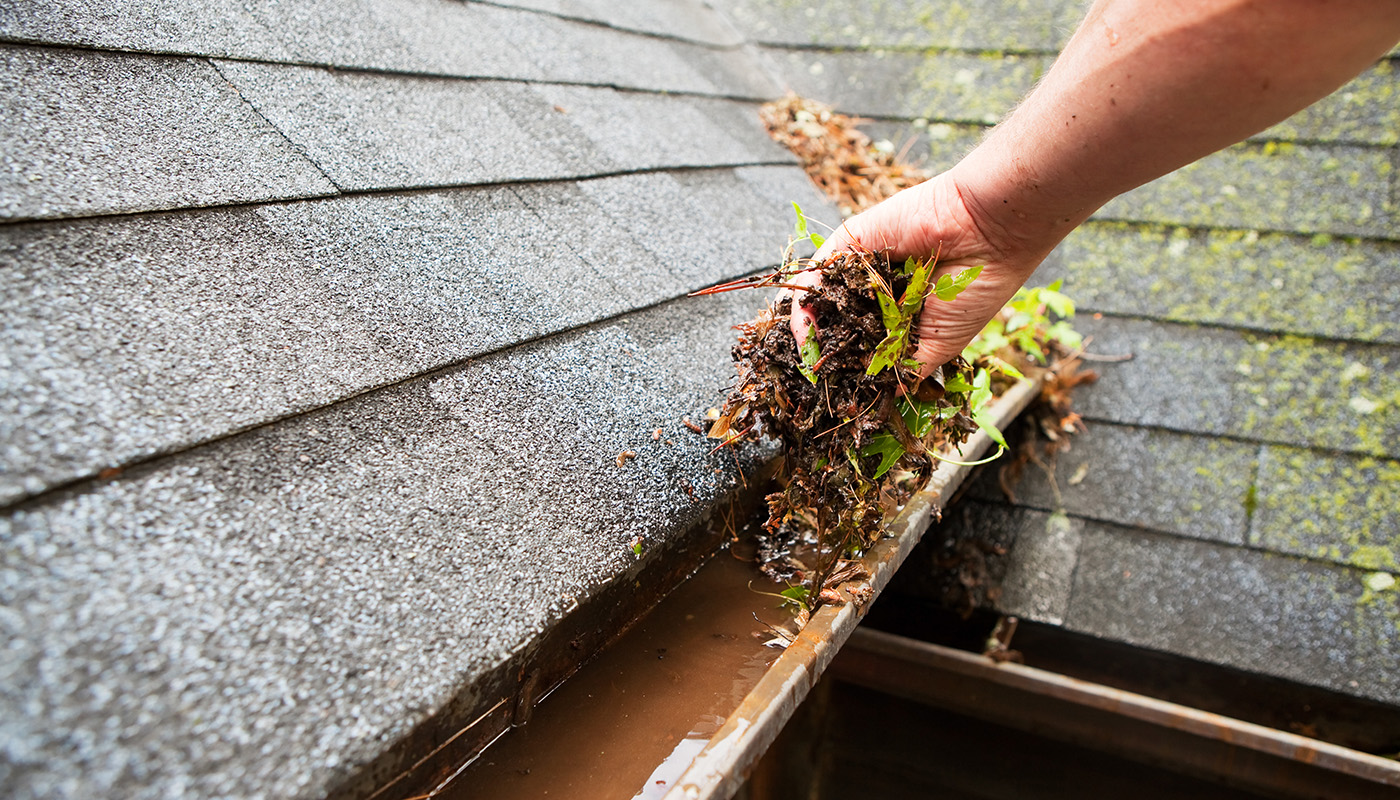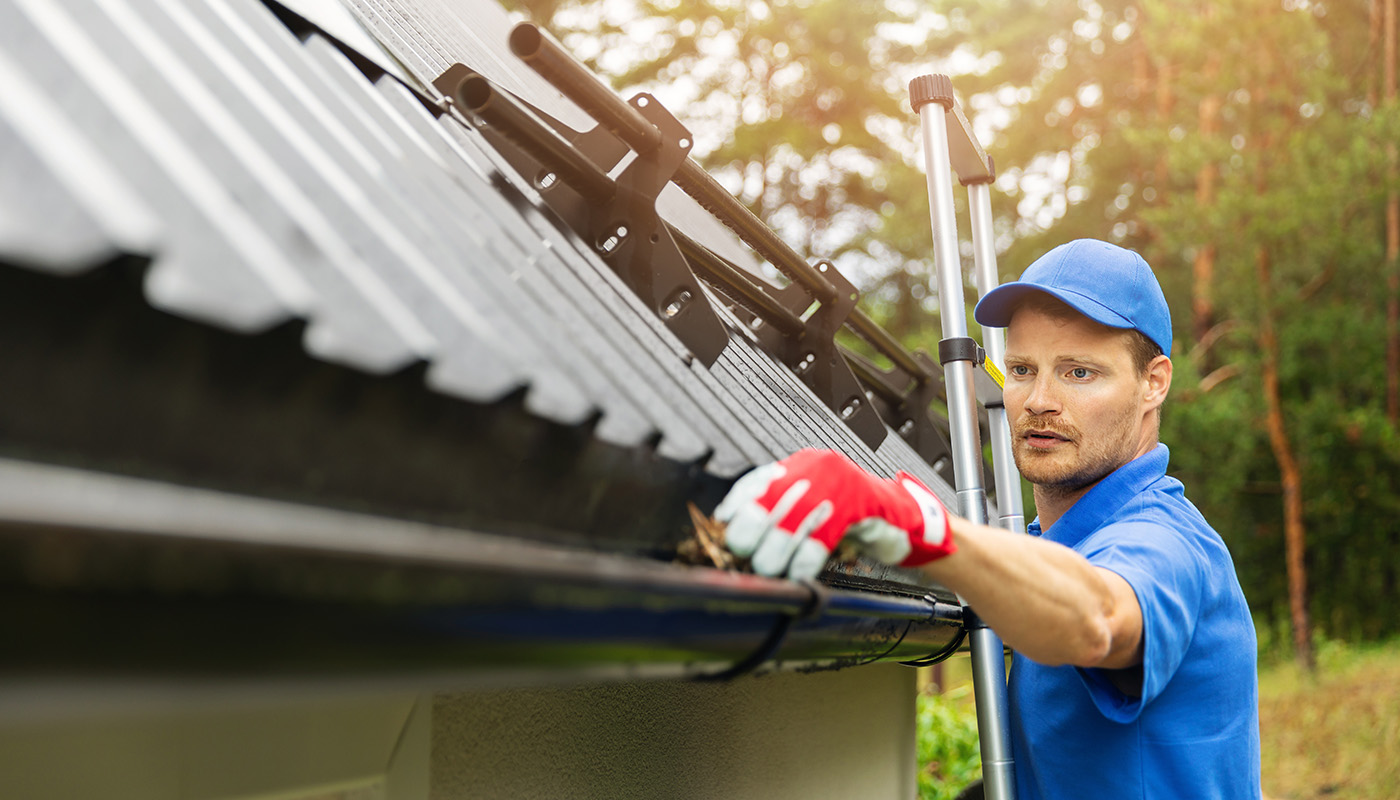Home Maintenance Overhead
Gutters, downspouts and roofs need regular attention.
 Steve Cicero/Getty Images
Steve Cicero/Getty Images
They’re just modest troughs attached to the edges of your roof, but their job is an important one. And when gutters can’t do what they’re supposed to—channel rainwater away from your house and property—it can lead to big problems that can be expensive to fix.
Gutter cleaning is a yearly issue, and depending on the environment you live in, sometimes it needs to happen more frequently.
 Posnov/Getty Images
Posnov/Getty Images
To anyone who's taken on the challenge of gutter cleaning, the clogging culprits are familiar: dead leaves, sticks, bark, nuts, seedpods and copious amounts of material that insects, birds, and other animals use to build nests.
Once these accumulate and start inhibiting the flow of water in your gutter system, all sorts of problems can result, including:
As home maintenance tasks go, unclogging gutters and downspouts probably ranks as one of the most neglected and loathsome. And it’s no secret why. Scooping out that filthy muck by hand is time-consuming, physically taxing and even risky if you’re working well above ground and standing on an extension ladder.
An annual gutter cleaning—ideally in the fall, after the seasonal cascade of leaves—is strongly recommended, but twice a year (spring and fall) is even better. If weather conditions permit and it’s not too involved an effort, complete the cleanout with a hard spray from a garden hose, aiming inside the gutters and into the downspouts to flush out any lingering debris.
Save on supplies like ladders, leaf blowers, gutter sealants, gloves and more with AAA Discounts & Rewards.
Get To Work iStock
iStock
It may look natural and even have a fairy-tale quality when it’s on a cabin in the woods, but moss is not something you want on your roof. The same goes for those ugly black streaks caused by algae growth, often seen on tile roofs. But moss is worse when it comes to roof damage.
Quite simply, moss can destroy the shingles and force them to separate from the roof, making your home susceptible to damage and decay, causing wood rot and blocking drainage points.
The damp, green, spongy stuff can cause expensive repairs and reduce the lifespan of your roof. The north-facing portions of the roof—which receive little direct sunlight—are most attractive to moss, especially in areas that are consistently cool, damp and shady, or that are beneath thick tree canopies.
Want to win the fight against pesky moss? Keep sunlight on your side—the more, the better—in discouraging moss from spreading or even growing in the first place.
See what else is on the home maintenance checklist.
Start Checking It Off iStock
iStock
Roof cleaning is a must.
Roof cleaning to remove moss, algae, airborne debris and general gunk is usually a job best left to the pros. This is especially true for tile roofs, which are durable and beautiful but also prone to algae growth—and they can be slippery when wet.
A new roof is a substantial investment, so of course you don’t want to have to replace it any sooner than necessary. Regular cleaning can extend its life. Without consistent maintenance and cleaning—preferably using a gentle soft-wash technique that cleans without high pressure (which can be potentially damaging)—it won’t last as long as it should.
Having your roof cleaned at the same time each year will keep it in good shape so it remains an efficient barrier between living spaces and the outdoors.
To take roof protection a step further, after cleaning the roof, apply an algae-prevention solution, which is the type that many cleaning companies use. When applied to a clean roof, it protects against algae growth for two years.
Consider having your tile roof fully inspected every two years. This lets the experts check for damage, helps protect against leaks and maintains your warranty coverage. Your contractor can provide details about maintaining your roof.
How long should your roof, and other key parts of your home, last?
Check the Infographic iStock
iStock
Keep the following in mind regarding safety and hiring a contractor.
Cleaning your gutters and downspouts—never mind the actual roof—can be a demanding task. It usually requires an extension ladder so you can reach all the affected areas. Ideally, a second person is needed to stabilize the ladder to help prevent falls while you’re on it and moving around. If you are bothered by heights, are unsteady on your feet for any reason, or simply aren’t comfortable working on even the lowest level of your roof, it’s probably best to let the pros handle the job.
A quick online search reveals that there’s no shortage of commercial gutter and roof-cleaning services. As with other such companies, get cost and time estimates from several. Read customer reviews online, if available, and be sure that any service provider you’re considering is licensed and insured for what you want done.
Another smart move to avoid being disappointed with the quality of the work—or worse, being ripped off—ask friends, family and neighbors for contractor recommendations. You can’t put a price on trust.